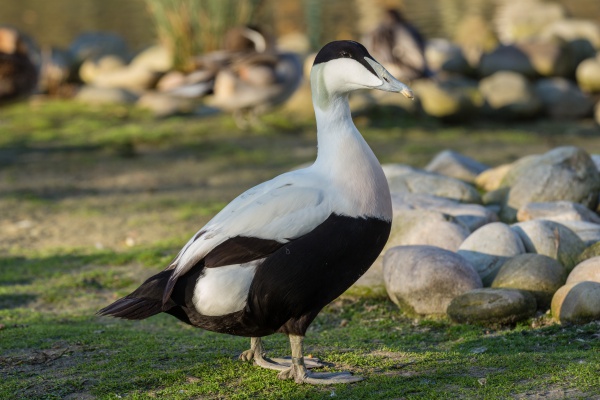Facts About Common eider
The common eider, also known as St. Cuthbert's duck or Cuddy's duck, is a large sea-duck found along the northern coasts of Europe, North America, and eastern Siberia. These ducks breed in Arctic and northern temperate regions and migrate to temperate zones during winter, where they congregate in large flocks on coastal waters. One intriguing fact about the eider is that its nest is lined with eiderdown, which is harvested from the female's breast. Historically, this down has been highly valued for making pillows and quilts due to its exceptional softness.
The common eider is the largest of the four eider species, measuring between 50 to 71 cm in length and weighing between 0.81 to 3.04 kg. The males are easily identifiable by their striking black and white plumage, whereas the females are brown. Their diet mainly consists of crustaceans and mollusks, with mussels being a preferred choice.
The common eider is quite abundant, with populations estimated to be around 1.5 to 2 million birds in North America and Europe. They are colonial breeders, nesting in groups on coastal islands. Interestingly, female eiders often return to the same island where they were hatched to breed, resulting in a high degree of relatedness within colonies. This close genetic relationship has led to cooperative breeding behaviors, such as laying eggs in the nests of relatives and sharing the responsibilities of rearing ducklings.
However, the common eider faces several conservation challenges. For example, in Canada's Hudson Bay, changing ice flow patterns have led to significant die-offs. Efforts are underway to monitor and protect eider populations, and the species is covered under the Agreement on the Conservation of African-Eurasian Migratory Waterbirds (AEWA).

 Netherlands
Netherlands